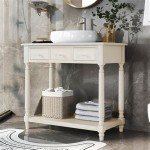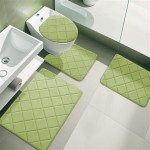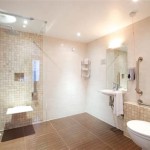How To Waterproof Your Bathroom
Waterproofing your bathroom is an important aspect of home maintenance that can prevent costly damage down the road. By taking the proper steps to waterproof your bathroom, you can protect your home from water damage, mold, and mildew. Here is a step-by-step guide on how to waterproof your bathroom:
1. Identify potential water sources: The first step in waterproofing your bathroom is to identify potential water sources. This includes areas where water is likely to splash or spill, such as the shower, bathtub, and sink. Once you have identified the potential water sources, you can begin to take steps to prevent water from damaging your bathroom.
2. Install a shower pan: A shower pan is a waterproof barrier that is installed under the shower floor. It helps to prevent water from seeping into the subfloor and causing damage. When installing a shower pan, be sure to overlap the edges of the pan by at least 6 inches and to seal the seams with a waterproof sealant.
3. Install a backer board: A backer board is a waterproof material that is installed behind the tile in your bathroom. It helps to support the tile and prevent water from seeping through the grout joints. When installing a backer board, be sure to use a waterproof adhesive and to seal the seams with a waterproof sealant.
4. Install tile: Tile is a waterproof material that is often used in bathrooms. When installing tile, be sure to use a waterproof grout and to seal the grout joints with a waterproof sealant. This will help to prevent water from seeping through the grout joints and damaging the subfloor.
5. Install a toilet flange: A toilet flange is a waterproof seal that is installed around the base of the toilet. It helps to prevent water from leaking from the toilet and damaging the floor. When installing a toilet flange, be sure to use a waterproof sealant to seal the flange to the floor.
6. Install a bathroom exhaust fan: A bathroom exhaust fan helps to remove moisture from the bathroom, which can help to prevent mold and mildew. When installing a bathroom exhaust fan, be sure to install it in a location where it will be able to effectively remove moisture from the bathroom.
7. Inspect your bathroom regularly for leaks: Once you have waterproofed your bathroom, it is important to inspect it regularly for leaks. This will help you to identify any potential problems early on and prevent them from causing major damage. If you do find a leak, be sure to repair it immediately.
By following these steps, you can waterproof your bathroom and protect it from water damage. This will help to extend the life of your bathroom and prevent costly repairs down the road.

How To Waterproofing Your Bathroom In 10 Steps Easy Drain

7 Best Ways To Waterproof Your Bathroom Keyvendors

How To Fully Waterproof Your Bathroom Dbs Bathrooms

7 Tips For Making Your Bathroom Waterproof Multi Trade Building Services

How To Make Your Bathroom Watertight Guide It Right

How To Waterproof Your Bathroom Floor Diy At Bunnings

How To Waterproof A Bathroom Tiler Tiling Perth

Bathroom Waterproofing Guide For Beginners Asian Paints

Why You Should Waterproof Your Entire Bathroom Megasealed

How To Waterproof A Shower 3 Awesome Methods







